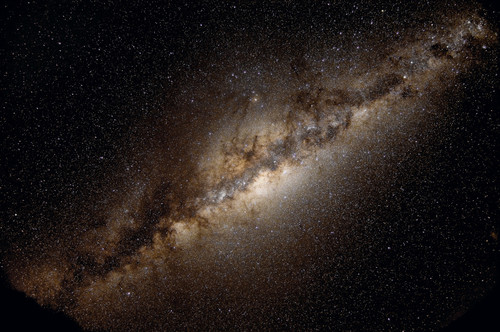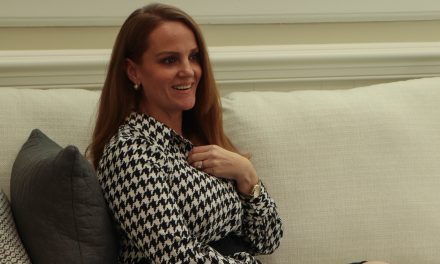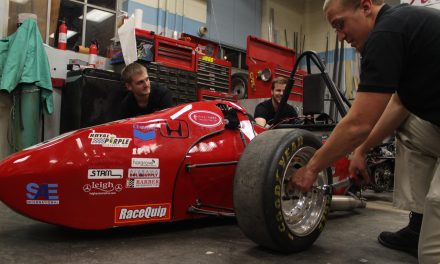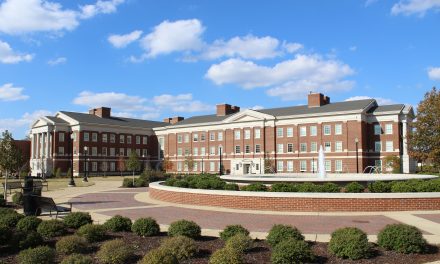STORY BY
STEPHEN HOLBROOK
Dr. Jeremy Bailin wants to understand why the Milky Way galaxy looks the way it does, and, as an astrophysicist and assistant professor at the University of Alabama, he has the opportunity to do so at a fundamental level.
“There are some important things happening in our galaxy right now, and I want to know what that tells us about how our home came to be,” he says.
Bailin says his area of study – galaxy formation – allows him to see what galaxies look like, and, hopefully, to see how they got that way, if they have changed over the progression of the universe, and, more importantly, why they look the way they do. He says that, while he certainly studies our own Milky Way and similar disc galaxies, he also focuses on other types of observable galaxies.
“Most people will put a lot of effort into finding a nice disc galaxy, like the Milky Way, and trying to understand it,” he says. “The problem with that is that there is more than one galaxy in the observable universe. I like to simulate several types of galaxies and try to understand certain properties of all of them.”
Bailin’s research displays itself in three areas. Mainly, he is a computational theorist, meaning that he applies the laws of physics – for example, the effects of gravity and stars turning into supernovae — to computer simulations of completely homogenous early-universe galaxies, and evolves them forward a certain number of years. Then, he compares his results to actual galaxies.
 “We can use these simulations to understand real galaxies in ways that simply can’t be done observationally,” Bailin says. “Because galaxies evolve on scales of billions of years, we can only study galaxies as they are at a particular moment in time. The simulations allow us to watch individual objects change over time and give us an idea of which physical processes are important.”
“We can use these simulations to understand real galaxies in ways that simply can’t be done observationally,” Bailin says. “Because galaxies evolve on scales of billions of years, we can only study galaxies as they are at a particular moment in time. The simulations allow us to watch individual objects change over time and give us an idea of which physical processes are important.”
The second and third manifestations of Bailin’s research both deal with stellar halos, the areas in the outskirts of galaxies. He says that his interest in stellar halos comes from the strong evidence of hierarchical merging that can be found most evidently in the outer regions of galaxies.
“Galaxies form in a hierarchical way,” he says. “Small things form first and then merge together to form larger and larger objects. While it’s difficult to observe that process, as it takes place over billions of years, we can see evidence of it in the galaxies’ stellar halos.”
It’s this phenomenon in which Bailin has taken the most interest. He hopes his research will allow him to understand it both computationally – essentially, trying to reproduce it in a simulation – and observationally.
From an observational standpoint, says Bailin, the Milky Way is both the easiest and most difficult galaxy to study because of the position of our solar system within it.
“The Milky Way is easy to study because we know so much about it already,” he says. “At the same time, however, it’s also hard because we’re right in the middle of it. Distance is a difficult thing to measure in astronomy, and it’s hard to get a wide sense of what’s actually happening from where we are.”
Because of this difficulty, Bailin mainly studies the outskirts of the Andromeda galaxy, which, at a mere 2.5 million light-years – about 14.6 quintillion miles – away from the Milky Way, is the closest spiral galaxy to us. Using the Hubble Space Telescope and other ground-based telescopes, he is also able to study other galaxies that are even further away.
The problems on the theoretical side, however, are less simply solved.
“Once you have your observational data, you need something to compare it to, in this case, simulated models,” says Bailin. “The problem is computational power.”
Bailin says that, because of the sheer number of stars in galaxies – called “particles” once simulated on a computer – it’s computationally unfeasible to come up with a full working model to use for observational comparisons. Because of this, he says, modern astrophysicists have been forced to take shortcuts in order to formulate models to make such comparisons. It is with such models that Bailin takes exception.
“The current models make various assumptions on things that [the authors] think can be simplified,” he says. “The problem is that their predictions are vastly different and they produce wildly different results. We can’t really test these assumptions, and, because of that, we have no idea which one, if either, are correct.”
The two models of which Bailin is speaking are called, respectively, the Bullock-Johnston model and the Cooper model. According to a 2011 study conducted by Bailin and other collaborators, the Bullock-Johnston model assumes that stellar mass – calculated by star placement within the galaxy – can be “painted” onto the model, while the Cooper model only measures the gravitational effects of dark matter on the galaxy. The results of the study imply that both models leave something to be desired in terms of accuracy.
However, Bailin believes that creating a new model, which is the focus of his current research, can solve the discrepancies left by these models.
“We have all this great observational data, and nothing trustworthy to compare it to,” he says. “We need a new generation of model, a new way to model what stellar halos should look Graduate student Krista McCord, who has been working with Bailin on the new model, says that their model will differ from previous models in that it will combine aspects of both the Bullock-Johnston and Cooper models, as well as sneaking other calculations into the simulation.
“The result will hopefully be a more accurate model that we can make observational comparisons to,” she says.
The implications of Bailin and McCord’s research extend beyond the study of stellar halos, however. Bailin believes that the model could be used in other forms of astronomical research, such as the study of supermassive black holes – incredibly large, dense regions of space found at the center of galaxies – which, even at masses far exceeding that of the Sun, are a relatively small aspect of the galaxy as a whole.
“It’s difficult to study galaxies because there are things happening on multiple scales,” Bailin says. “Ideally, our model will be able to account for both small things and big things, and will be able to do it quickly.”
McCord says that, if successful, the new model could affect modern technology.
“Technology always has to keep up with research,” she says. “If it’s not where it needs to be when we complete the model, it’ll have to catch up.”

One of Balin’s simulations of an early-universe galaxy.
While the project is still in its early stages, Bailin says he is thrilled with how it’s moving forward.
“We’ve definitely still got a few years ahead of us, but I’m truly excited to see where this project will lead,” he said.
McCord says that working with Bailin on this project has been extremely rewarding. In addition to working on a model that could potentially be used worldwide, she has had the opportunity to work with collaborators as far away as Australia.
“It’s amazing to think that I’m working on something that could be used by astrophysicists everywhere,” she said. “There’s even been talk of me actually travelling to Australia to work with researchers there. It’s been a really cool process.”
In the end, however, Bailin simply hopes that his research will lend itself to a greater understanding of not just how galaxies form, but of the Milky Way galaxy in general.
“I want to understand our history and why our galaxy ended up looking the way it does,” he says. “This is our home. It’s a fascinating place to live, and I want to understand it better.”







